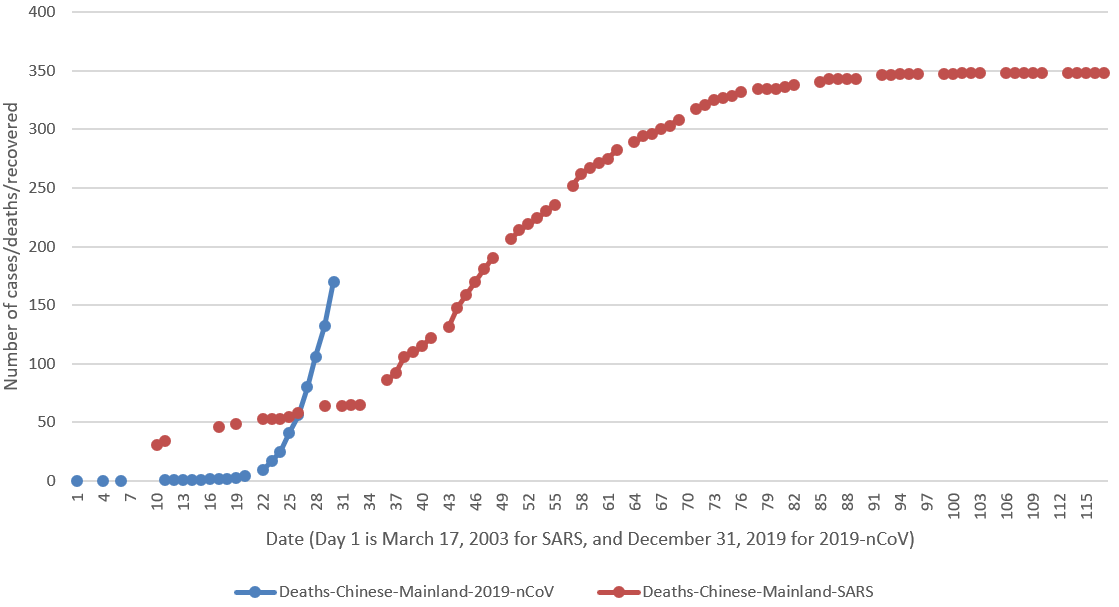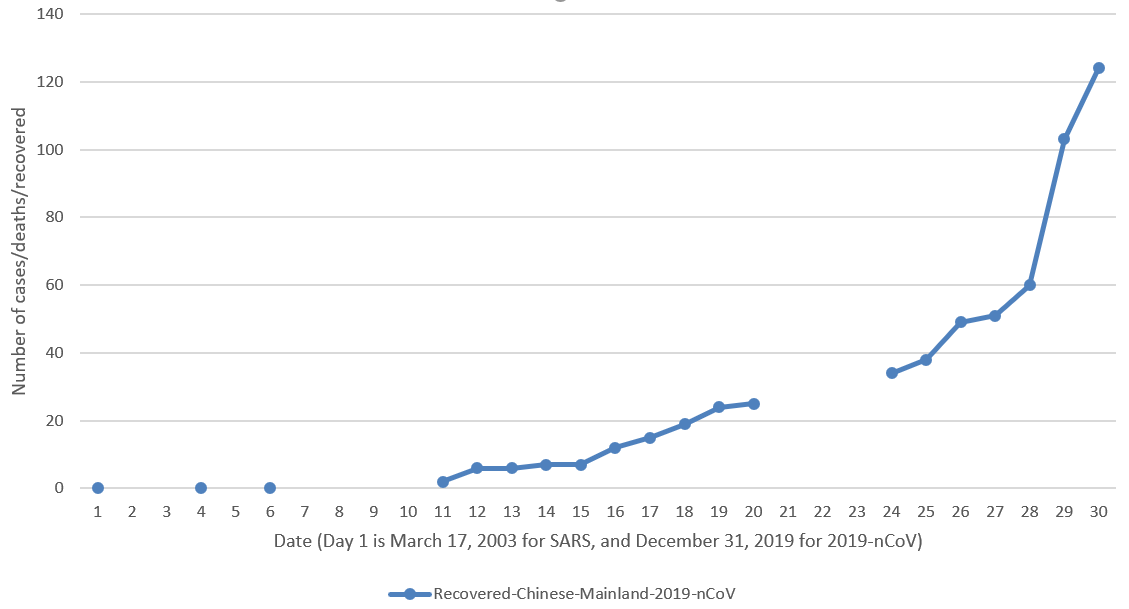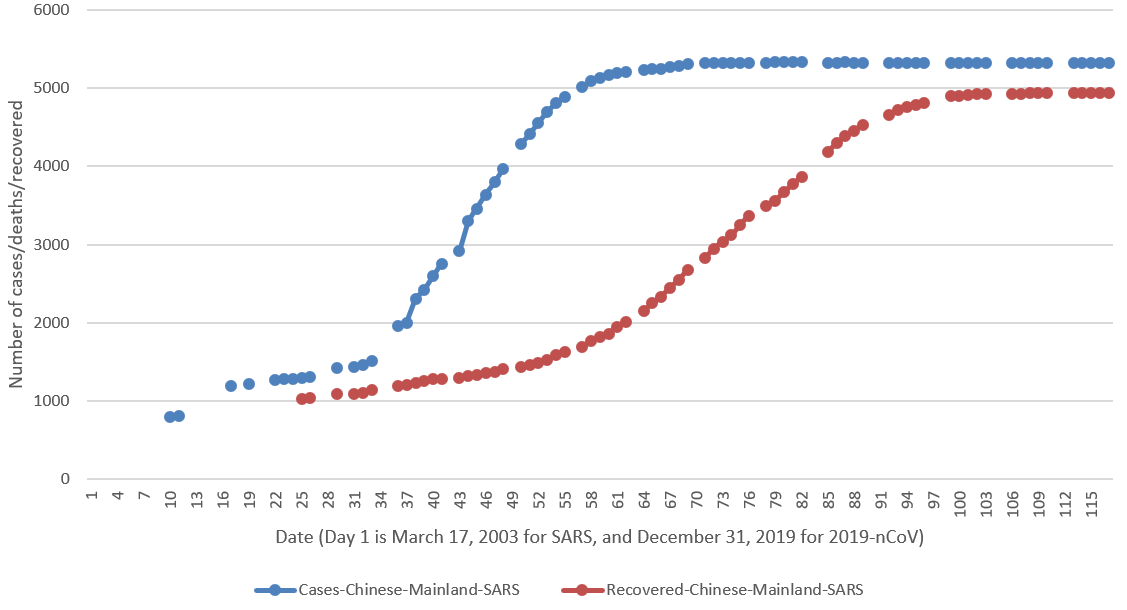The novel coronavirus, or 2019-nCoV, is spreading quickly in China, especially in the origin city of Wuhan.
As of January 29, more than 7,700 people have been infected by the virus – more than all the SARS patients in China back in 2003.

The number of cases reported during 2019-nCoV and SARS outbreak in China. /Graph by Gong Zhe
The number of cases reported during 2019-nCoV and SARS outbreak in China. /Graph by Gong Zhe
The picture doesn't look good. The new coronavirus is spreading faster and showing no signs of slowing down.
The claim that the "novel coronavirus is worse than SARS" has become more solid than three days ago, when we published the first analysis.
Read more: Coronavirus vs. SARS: How similar are they? Data tells
The good side is that a brake is being hit. As estimated by Zhong Nanshan, the "SARS Hero" who helped to stop the outbreak of that viral respiratory disease in China in 2003, the novel coronavirus will reach its peak in "seven to 10 days."
It can be estimated that nearly 12,000 people will be infected in 10 days if the virus goes on spreading at the current speed and follows the SARS pattern.
This is a very rough estimate and shouldn't be treated as official information from the Chinese government.
Zhong's view was echoed by epidemiologist Zeng Guang, chief scientist and doctoral supervisor at the Chinese Center for Disease Control and Prevention. "We will see great progress by January 15 on the Chinese lunar calendar (February 8 on the Gregorian calendar)," he told the Global Times' Hu Xijin.
Zeng also said the turning point will appear early thanks to the efforts of the Wuhan people, who have been staying at home after a public transportation lockdown.
"This is a great chance and we need to find the patients who are out of Wuhan," he added.
Last time, we said that the coronavirus is less lethal than SARS. Data showed SARS has a mortality rate of roughly 10 percent; the coronavirus rate is less than half of that.

Number of deaths linked to 2019-nCoV and SARS in China. /Graph by Gong Zhe
Number of deaths linked to 2019-nCoV and SARS in China. /Graph by Gong Zhe
Now, with the new data considered, the rate has dropped even more. Of the 7,736 cases reported by January 29, 170 people have died. So, the mortality rate is a bit more than two percent, meaning one in 50 patients may die.
But as shown in the picture, patients seem to be dying faster than a week ago. The growth also seems to be faster than SARS at the same stage.
This is a new and potentially alarming trend.
What's more, the condition of patients is also getting better, with 124 people having recovered and left hospital in China.

Cases of people who have recovered in China during 2019-nCoV outbreak. /Graph by Gong Zhe
Cases of people who have recovered in China during 2019-nCoV outbreak. /Graph by Gong Zhe
Some may have noticed that the novel coronavirus patients seem to be recovering more slowly than SARS sufferers.

Total and recovered cases during the SARS outbreak in 2003. /Graph by Gong Zhe
Total and recovered cases during the SARS outbreak in 2003. /Graph by Gong Zhe
But from the SARS data we can clearly see a big gap between the infection (blue) and recovery (red) lines. That means it takes some time to heal a patient, and the time can be three to seven weeks.
If that's also true for the coronavirus, it may still take weeks of devotion from the tireless and conscientious medical staff before most patients are cured.
We should also pay attention to non-China cases because they also have the potential to spread the disease, if not isolated properly. The virus can lurk in a human's body for as long as 15 days before causing any symptoms. That is to say, the possibility for a wide global spread still cannot be ruled out.
It's only a few days before the World Health Organization decides on whether to declare a "Public Health Emergency of International Concern (PHEIC)."
Which of the two viruses – SARS or coronavirus – do you see as more dangerous? Share your opinion on our social media account or directly email us.
(Data source: World Health Organization and National Health Commission)